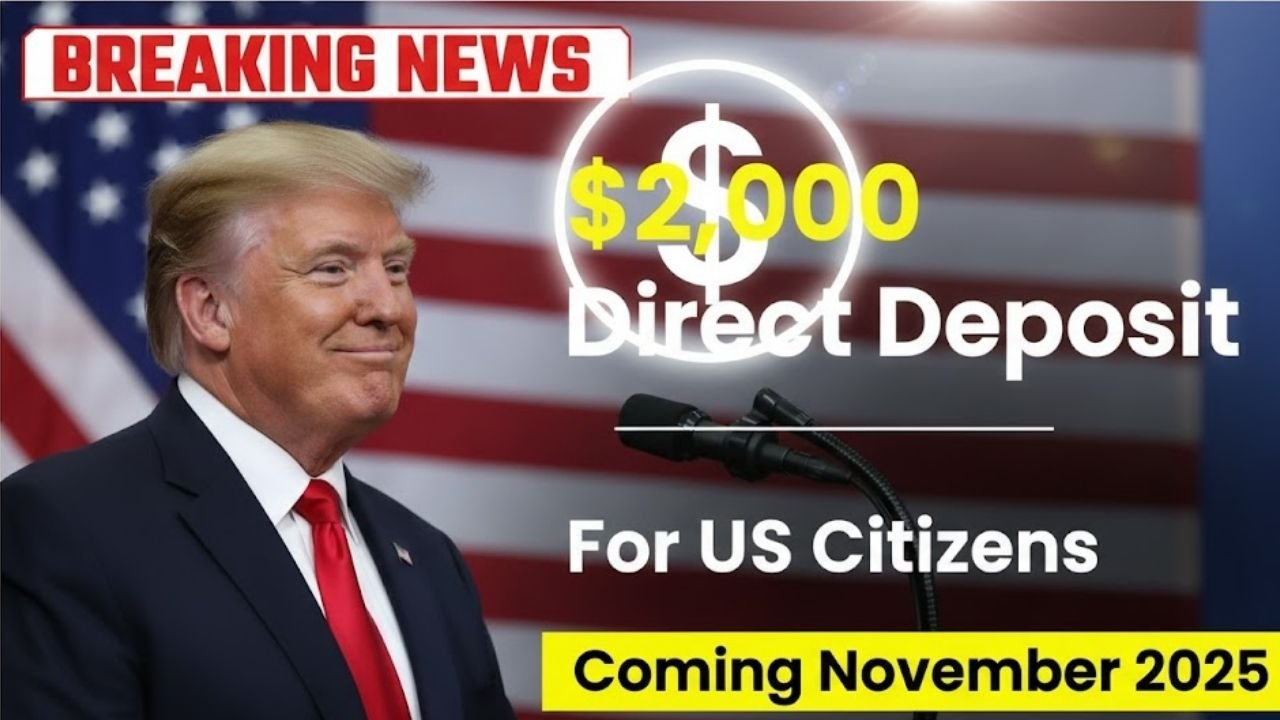Millions of Americans are preparing for a new round of federal financial support as the U.S. government announces a $2,000 direct deposit scheduled for November 2025. With rising costs for housing, healthcare, and everyday essentials, this payment aims to provide meaningful relief to households feeling the pressure of inflation. While not officially labeled a stimulus, this initiative is part of a broader plan to support citizens and ensure economic stability during challenging times.
Purpose of the $2,000 Direct Deposit
The November 2025 payment is designed to help individuals and families cover essential expenses without falling behind on bills. It is fully non-taxable and will not reduce Social Security, Medicare, housing benefits, or other federal assistance. The program targets Americans who have been most impacted by rising costs, providing immediate financial support for groceries, rent, medical bills, utilities, and transportation. For retirees, veterans, and disabled individuals, this deposit adds an extra layer of financial stability during a period of economic uncertainty.
How the Program Works
The U.S. Treasury Department, in coordination with the Internal Revenue Service (IRS), oversees distribution. Payments will be delivered automatically through direct deposit or paper checks, depending on previous taxpayer records. Federal benefit recipients, including Social Security, SSI, SSDI, VA, and RRB participants, will receive their deposits using the same method as their monthly benefits. The system is designed to minimize hassle, with no additional applications or forms required for most eligible Americans.
Eligibility Requirements
Eligibility is primarily based on federal tax records and participation in government programs. Key points include:
- Must be a U.S. citizen or legal resident with a valid Social Security Number (SSN) or Taxpayer Identification Number (TIN).
- Individuals who filed a 2023 or 2024 tax return will automatically be evaluated.
- Federal benefits recipients who did not file a return are also eligible.
- Income limits:
- Single filers earning up to $75,000 annually.
- Married couples filing jointly earning up to $150,000.
- Heads of household earning up to $112,500.
- Partial payments may be available for those exceeding these limits based on a phase-out formula.
Importance for Vulnerable Groups
This payment is especially impactful for:
- Low-income earners
- Families living paycheck to paycheck
- Seniors on fixed incomes
- Disabled individuals relying on federal support
It helps bridge gaps created by inflation, covering necessities such as groceries, rent, utilities, medical bills, and childcare. For working families, the relief is timely, offering financial breathing room during the holiday season.
Payment Schedule and Processing
The IRS has outlined a phased distribution plan:
- Direct deposits: November 10–29, 2025
- Federal benefit accounts: November 14–21, 2025
- Paper checks: Starting November 25, expected to arrive by mid-December
The method mirrors prior federal relief programs, ensuring fast and reliable delivery.
Tracking Your Payment
The IRS will activate an updated “Get My Payment” portal ahead of distribution. Citizens can check:
- Payment processing status
- Method of delivery
- Estimated arrival date
Keeping IRS and Social Security records updated ensures timely delivery and prevents delays.
Non-Taxable and No Impact on Benefits
The $2,000 deposit is not taxable and will not affect eligibility for federal programs like SNAP, Medicaid, Section 8, or Social Security. Its sole purpose is to provide direct support without creating financial or legal complications for recipients.
FAQs
When will the $2,000 deposit be sent? November 10–29, 2025, depending on delivery method.
Who qualifies for the payment? U.S. citizens or legal residents meeting income limits or enrolled in federal benefits.
Is it taxable? No, it is fully non-taxable.
Do I need to apply? Most eligible individuals will receive the payment automatically.
Will it affect other government benefits? No, it does not reduce Social Security, Medicare, or other assistance.
Conclusion
The $2,000 direct deposit in November 2025 provides timely financial relief to millions of Americans facing rising living costs. With automatic distribution, non-taxable status, and no impact on federal benefits, it offers a straightforward and effective way to support households during economic uncertainty. Ensuring personal IRS and Social Security records are current will help recipients receive their payment smoothly and on time. This initiative represents a meaningful step in easing the financial pressure for families across the country.





